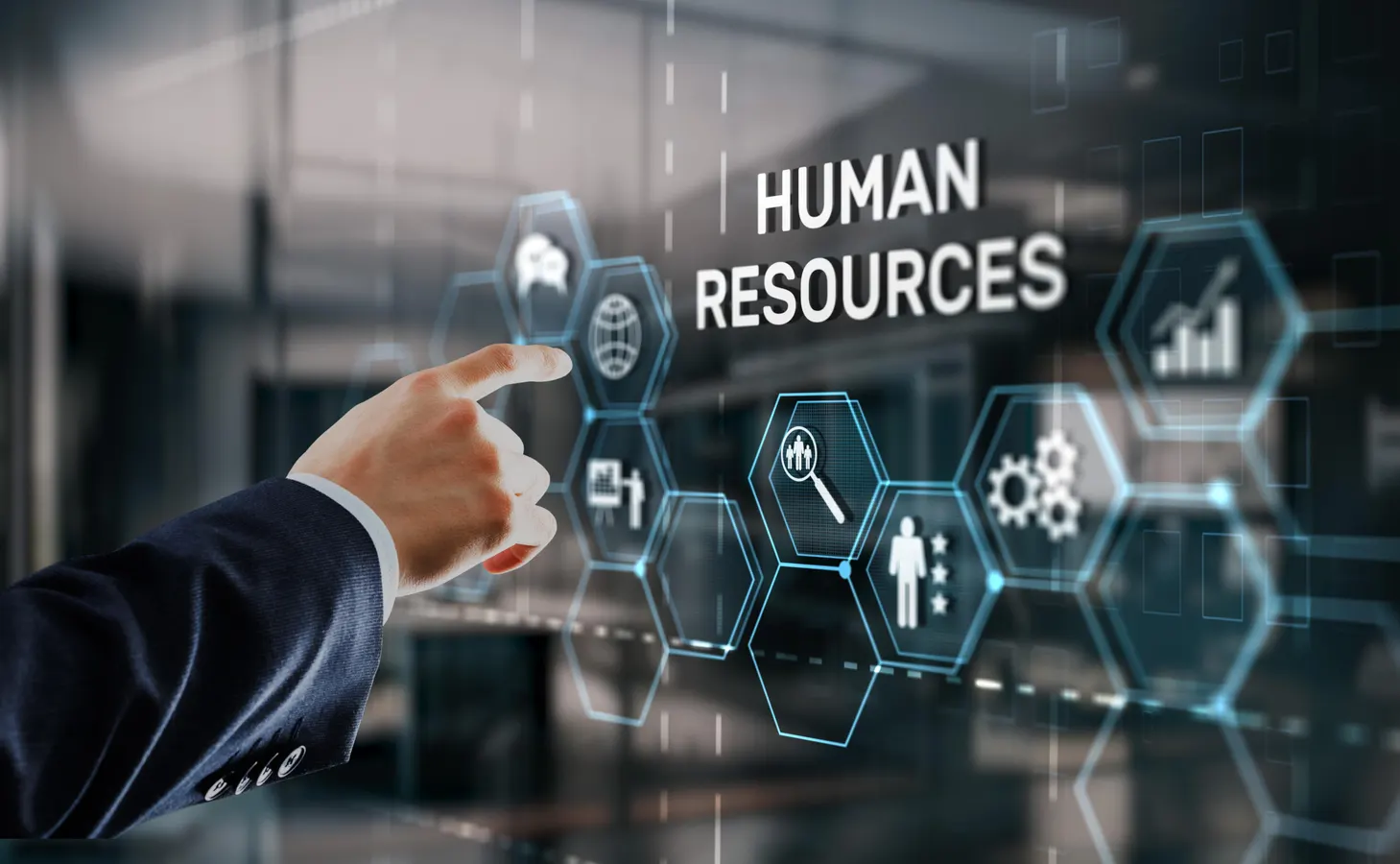By Adrian Bridgwater,Senior Contributor
Copyright forbes

Modern Human Resources Hiring Job Occupation Concept. Business Technology.
AI helps humans. That’s the core message that advocates of predictive, generative and agentic AI services are always keen to stress. As the AI hype cycle now traces out its latest curve, people are understanding which grunt-work jobs might be replaced, which higher-value roles will be empowered and created… and where AI itself is going to amplify human abilities to create what is supposed to be a better world.
With every software (and indeed hardware) vendor now obsessing over its message set in this space, it is a pertinent point for Workday to address, given its platform focus on the particularly people-centric disciplines of human resources and financials. The organization has spent much of the last year developing agentic services that perform tasks normally associated with accounting and HR.
But human obsolescence and skills degradation are a concern, so how will these new tools fit into our daily working lives and can we still retain our ability to learn and reason as human beings with so much automation around us?
Is AI Killing Human Skills?
During a press and analyst discussion entitled “Is AI quietly killing our skills?” this month, speakers acknowledged the fact that calculators have removed the need for sharp mental arithmetic, while Google Maps has created a generation of cartography-confused people who wouldn’t know a Silva compass from a vegetable slicer.
SVP for talent and chief learning officer at Workday Chris Ernst spoke alongside Heather Stefanski, chief learning & talent officer at McKinsey & Company, to deconstruct these issues and explain that both firms are working to capture the “science of learning” as agentic services now come online in the workplace.
MORE FOR YOU
“It sounds counterintuitive, but we teach people how to teach and we teach people how to learn,” said Stefanski, who explained how her consulting firm is straddling the intersection point of agentic application services. Agreeing with the challenge here, Ernst underlined why we should now be focusing on the emotive human skills that will remain after automation is truly applied across the workplace.
So then, just how agentic has HR become?
Head of agentic AI at Workday Jerry Ting arrived at his position as a result the acquisition of contract intelligence specialist Evisort. Speaking alongside chief technology officer Peter Bailis, the pair have explained how agentic AI now delivers employee performance reviews, how it executes financial close actions and how it handles tasks like cost and profitability analysis. HR agents can also gauge employee sentiment and write employment contracts to manage contingent workers by creating a statement of work with workplace obligations. Agents can also address tasks right to payroll, where the buck ultimately stops.
“The world is a lot more complex than it used to be,” said co-founder and executive chair of Workday, Aneel Bhusri. “I honestly believe that right now, AI is under-hyped today – which is both good and scary in equal measure. Things are trending up now. Last year we had inflated expectations and people thought that AI was going to solve everything… today, I think people know what AI can do and what it can’t do… so I think we’re on the path to enlightenment.”
Bhusri says that organizations now need to manage core frontline worker staff, back office workers, contractors and freelancers, but also an increasing cadre of agents. “Those agents are very functional and don’t get sick, but they also don’t listen very well,” said Bhusri. “We believe there is a better way forward with a dedicated open platform approach to building AI. With an agent system of record, we can track what agentic elements are at work inside any given stack and then drive what we call ‘deep AI applications’ for all workers.”
The platform is fuelled by one trillion transactions per year, so from this, the company says it has deep domain expertise to understand how business processes work. The suggestion here what has been called a “system of action” for work execution i.e. given that we might call an ERP suite a system or record and we might call a point-of-sale or an airline booking service a system of transaction, a system of execution is all about workflows and tasks.
A Manifesto For AI
Co-founder Bhusri says that every AI product should amplify talent potential, improve decision making, strengthen compliance, boost productivity and deliver a big return on investment once deployed; and that list is essentially the organization’s manifesto for all AI development. Talking about the open platform approach that the business now says it is devoted to, he explains that the company wants to help users integrate with any technology service, any software application development language (and corresponding methodology) and any other technology substrate, component or service.
“Taking AI from an experiment to an enterprise-grade service is very difficult. Getting data AI-ready and tackling governance and compliance is tough – and disconnected point products make things even more difficult. This vicious circle is made even tougher by closed platforms,” said Gerrit Kazmaier, president of product and technology at Workday.
He says that his firm’s approach previously meant that it never used the term ERP, but now its workflow agents are driving it to actually be able to talk about enabling an iteration of ERP with full business context. Given that Kazmaier himself was recruited from SAP, it appears to make sense that he would talk about the company’s platform in this way.
The View From The CEO
Affably ebullient Workday CEO Carl Eschenbach was happy to be questioned on just how far the company might go on its mission to be the “single entry point” that workers use to access all the enterprise IT services they might need as they carry out their jobs. Given that the organization is now directly aligning to ERP services, how far does the company’s platform ambition stretch? Why stop at ERP… why not create even wider ambitions to encompass field service management, enterprise asset management, identity and authentication management and plain old customer relationship management?
“I think, in the last two years, we’ve gone from positioning our business as an application company delivering HCM and financials, to being one of the few companies that can truly claim they’re both an application company and a platform company,” said Eschenbach. “If you follow all of our narrative now, we talk about being that platform company and we’re supporting many different applications, both ours and third party. So we’re aggressively opening up the aperture of our platform to allow people to consolidate other point products and also to innovate on top of it.”
Eschenbach says on the question of whether the company would go down the industry route of picking up other types of services that are slightly adjacent to its core competencies, the firm has done a little of that.
“It’s been wildly successful in healthcare with our supply chain products. We’ve done it in the higher education space with a student platform that gives us very specific industry offerings. Will we go down more routes? I won’t say, no, never. But right now, I would also say, we don’t have a strategy to go do that as articulated in this question; the open platform approach to the third-party experience with the open platform approach is what we’ve done,” he confirmed.
HR Market Competitive Analysis
Big names operate in the enterprise HR software marketplace, not least of which is SAP with its SuccessFactors HCM suite. With some technologies acquired by SAP are wholly consumed into the company’s underbelly, SuccessFactors has retained its original identity and dovetails well with the company’s ERP suite of business function software.
At a comparable level is Oracle with its Oracle Fusion Cloud HCM. Making obvious use of Oracle’s autonomous database layer, Oracle aims to set itself apart with HR functions that lean on its data infrastructure layer for multi-cloud environments. While HR software firms love to sell their cloud-native architecture, the lion’s share of firms in this space are also born in and of the cloud. High-ranking in this market is Dayforce, with its HR suite that encompasses payroll, benefits, plus workforce and talent management. With all players in the HR/HCM space aiming to demonstrate completeness of vision with descriptions of their extensive data model, others include UKG, ADP (with its Workforce Now product), then there’s Paycom (which, no surprise, champions payroll technology) and Paylocity.
Others aim to differentiate themselves with market specialisms or a dedicated industry vertical focus. BambooHR does that (it focuses on SMEs) and prefers to talk about HRIS, standing for human resources information system provision. Analyst firm Gartner’s analysis of the HR software marketplace also mentions Info, Cornerstone, Darwinbox, Yonyou and Cegrid.
Beyond ‘Traditional’ HR Functions
Tiffani Bova, chief strategy and research officer at The Futurum Group explains that Workday’s marketplace strategy today increasingly focuses on collaborating with a diverse partner ecosystem that “goes beyond traditional HR functions”, including AI-powered analytics, healthcare and financial services applications.
“This enhances its position as a platform ecosystem company, contrasting with SAP SuccessFactors’ more focused ERP connection and Oracle Fusion Cloud HCM’s independent database strength,” explained Bova. “[The company’s] strong network of ISVs and technology partners often leverages [its] cloud-native architecture to deliver specialized extensions, which enhance the overall value for enterprise clients seeking seamless, scalable HR and financial workflows.”
Enterprise organizations procuring HR suites for the first time (or as part of some wider drive to embrace digital services) may look for how deeply a vendor offers global localization options, mainly because this is so important for payroll. As well as now determining how effective any given HR platform is at delivering agentic AI services, software buyers at this level will also look for low-code functionalities, how configurable the platform is, how the cloud architecture and management backend is formed to determine scalability, security and scope of services… and of course price.
Digital HR is here. The market winner may be the vendor who shoulders the most admin and management through its data and services backbone and manages to keep the human in human resources.
Editorial StandardsReprints & Permissions



